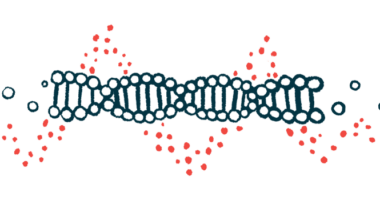Asporin may be biomarker, therapeutic target in PAH: Study
Increasing protein associated with reduced blood vessel remodeling

The protein asporin was identified as a possible biomarker of disease severity and to be protective in pulmonary arterial hypertension (PAH), a study suggests that used lung and blood samples from people with the disease.
The protein was increased in PAH patients and correlated with reduced disease severity. In cellular and animal models, increasing asporin was associated with reduced blood vessel remodeling, a process in PAH that involves structural alterations and the rapid growth of vascular smooth muscle cells, which narrows blood vessels when they contract.
“Asporin represents a promising new target for therapeutic intervention in pulmonary arterial hypertension,” Jason Hong, MD, PhD, pulmonary and critical care physician at UCLA Health and the study’s first author, said in a press release. “Enhancing asporin levels in PAH patients could potentially lead to improved clinical outcomes and reduced disease progression.”
The study, “Integrative Multiomics in the Lung Reveals a Protective Role of Asporin in Pulmonary Arterial Hypertension,” was published in Circulation.
To better understand the molecular and cellular mechanisms that drive PAH, researchers at UCLA Health and their collaborators used the GSE254617 dataset from the Gene Expression Omnibus, the largest multicenter PH lung biobank available to date. The study used transcriptome data — when genes are copied into messenger RNA, an intermediary molecule that carries the instructions to make proteins — from 96 lung samples of PH patients (94 with PAH) and 52 from people without the disease.
Asporin levels in PAH
A total of 5,253 genes showed different activity between the two groups — 2,719 had higher activity and 2,534 had lower activity in PAH patients. Results also showed the existence of 20 modules, which represent clusters of genes that share biologic functions.
Two modules mostly included genes enriched in PAH patients and were associated with disease diagnosis, underlying mechanisms, and severity. One group included genes related to the genetic risk of developing PAH.
After a closer look at the two modules, three hub genes (ASPN, LTBP2, and APLN) with high levels of co-expression were identified. Of these, ASPN was the only gene that hadn’t been previously linked to PAH and the one showing the strongest association with diagnosis.
Further analysis revealed that the protein asporin, which is encoded by that gene, had higher levels in the pulmonary arteries of PAH patients. A similar increase was found in blood levels of patients with varying disease severity.
Higher asporin levels in pulmonary artery smooth muscle cells (PASMCs) were associated with lower pulmonary artery pressure, the researchers found. And in blood, the protein was linked to better right heart function. The data suggest asporin is both a potential PAH biomarker and might have a protective role in the disease.
“We were surprised to find that asporin, which previously had not been linked to PAH, gets upregulated to increased levels as a response to counteract this disease process,” Hong said. “Our detailed analysis found higher levels of asporin in the lungs and [blood] of PAH patients, which were linked to less severe disease.”
To assess the underlying mechanisms and functional role of asporin in PAH, the researchers studied patient-derived PASMCs and a rat model of PAH where asporin was increased or decreased.
Reduced levels of asporin increased TGF-beta/SMAD2/3 signaling, a key pathway for PASMCs growth in PAH, results showed. In the animal model, RNA technology to shut down asporin production led to similar findings and more severe disease.
But when protein levels were increased through a lab-made form of asporin, the TGF-beta/SMAD pathway was inhibited. Lab-made asporin also decreased vascular remodeling and improved heart function and health.
The findings suggest asporin could counteract PAH by directly blocking the TGF-beta/SMAD pathway in PASMCs, reducing the vascular remodeling that underlies the pulmonary artery narrowing in PAH.








